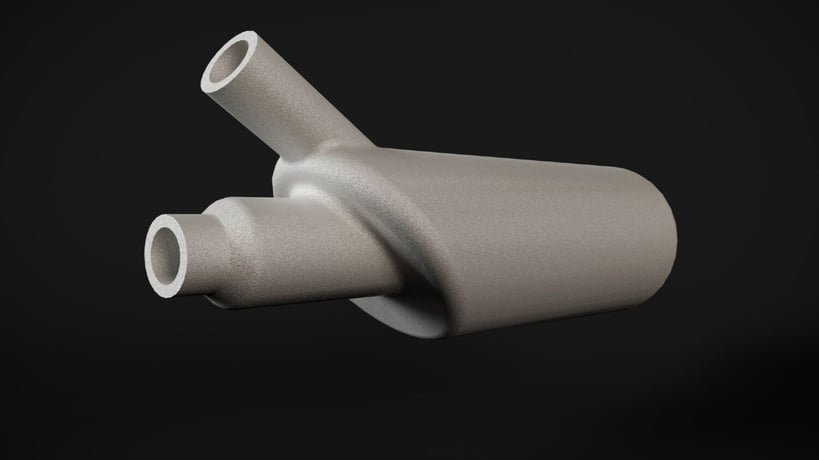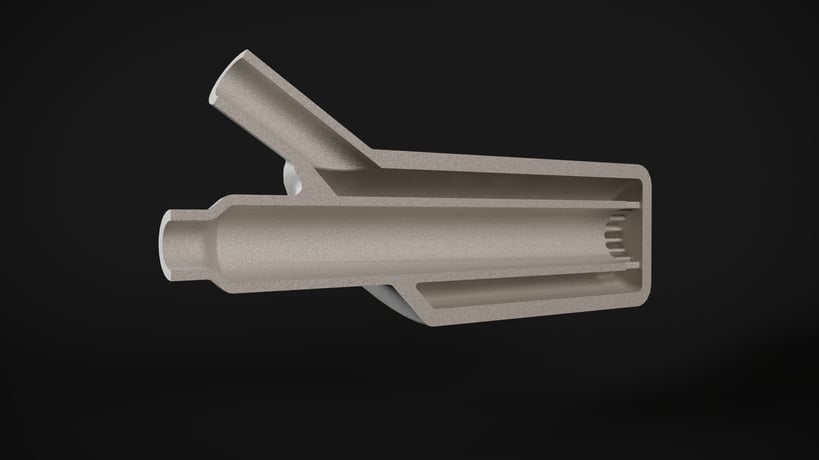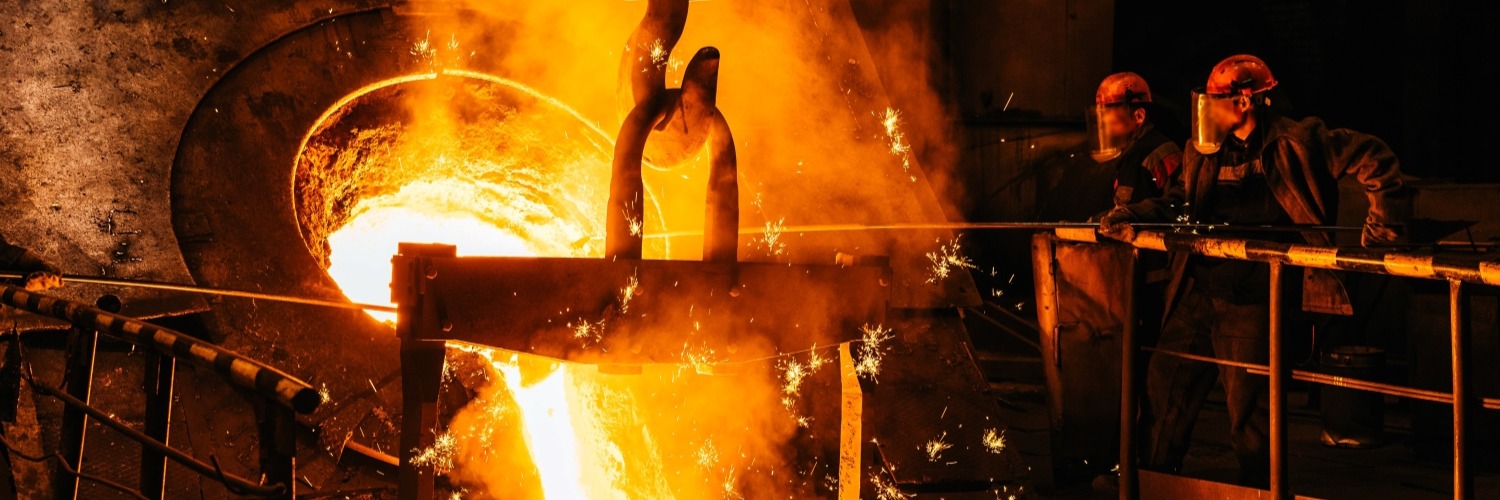The Problem
Urgent cooling solution needed for shutdown blast furnace
The blast furnaces of the ArcelorMittal steel plant are used to produce crude iron through a smelting process, whereby iron ore, coke and limestone are heated up to 1800°C to create molten metal. To protect the blast furnace shell from overheating, copper staves with water cooling pipes are fitted to the base of the shell. Over time, the copper staves begin to wear and water from the cooling pipes begin to leak into the furnace. Without significant and costly intervention this can ultimately lead to shell damage.
When leaks are detected, the water supply is cut, and blast furnace operations are suspended until an alternative cooling solution can be installed. The financial impact of blast furnace downtime can cost hundreds of thousands of euros per day.
The Solution
Using metal 3D printing to make an intricate solution viable
The typical response in the event of copper stave leak is to install a series of cooling plates around the outer diameter of the blast furnace shell. This solution can take days to construct, during which time the blast furnace is shutdown. An alternative solution is to use special tubular heat exchangers, which are drilled into the shell wall and cool the blast furnace shell from the inside. This system is more effective and much quicker to install, however it is made from many casted components welded together, and the welds degrade rapidly under the operating conditions of the blast furnace. For this reason, the tubular heat exchangers were never considered a viable solution.
Our local value engineer worked with the ArcelorMittal maintenance team to review the design of the heat exchanger and determine whether the solution could be made feasible using 3D printing.Using metal 3D printing the heat exchanger could be printed as a single component, eliminating the need for weld joints. Additionally, since 3D printing allows for greater design freedom, the design of part was further optimized to improve its heat transfer capability.


The Impact
Reduced operating down-time losses and improved reliability
The heat exchanger was designed and printed in a matter of days – 4x faster compared to traditional manufacturing. Furthermore, the part was printed from our industrial laser powder bed fusion printer located at the customer site, which minimized the time between printing and installation. This meant the blast furnaces could be resume operations faster, saving our customer millions in downtime losses.
In addition to superior lead-time, the 3D printed part proved to be more reliable and better at transferring heat from the blast furnace shell. In doing so, the economic lifetime of the blast furnace facility could also be extended.
The inside of a blast furnace is cooled by copper elements. At our BFA some of these elements had leakages due to age and the inside cooling was lost. Thanks to the use of fast 3D printed optimised cooling elements in combination with an external cooling we managed to keep the Blast Furnace shell cooled for more than a year until we were able to replace the failed elements.” ”
Alain Daelman, Blast Furnace and Sinterplant Department
At TheSteelPrinters we work closely with our customers to understand their operational challenges. The combination of our onsite value engineers and 3D printers means we can provide solutions customized to your operating needs rapidly, helping you to reduce your downtime risk.



